Abstract
Groups of male and female Fischer 344 rats, B6C3F1 mice, and Hartley guinea pigs were exposed once for 6 hr to mean concentrations of 10.5, 5.4, 2.4, 1.0, or 0 (control) ppm of methyl isocyanate (MIC) vapor. Rats and mice were also exposed to 20.4 ppm of MIC. The majority of deaths occurred during postexposure days 1 through 3. The 6-hr LC50 values (with 95% confidence limits) were 6.1 (4.6 to 8.2) ppm for rats, 12.2 (8.4 to 17.5) ppm for mice, and 5.4 (4.4 to 6.7) ppm for guinea pigs. Notable clinical observations during and immediately following MIC exposure were lacrimation, perinasal/perioral wetness, respiratory difficulty (e.g., mouth breathing), decreased activity, ataxia, and hypothermia. Body weight losses were common in all species following MIC exposures of 2.4 ppm or greater. Microscopic lesions included acute necrosis of the epithelial lining throughout the respiratory tract in animals that died shortly after exposure, coupled with congestion, edema, and inflammation. A microscopic lesion that appeared unique to guinea pigs was bronchiolitis obliterans (where the products of necrosis and inflammation completely closed the bronchioles). Additional microscopic lesions observed in some animals that died or were sacrificed at the end of the study (postexposure day 14) consisted of squamous metaplasia of respiratory epithelium in the nasal cavity, which extended into the larynx, trachea, and in some cases, the bronchi.(ABSTRACT TRUNCATED AT 250 WORDS)
Full text
PDF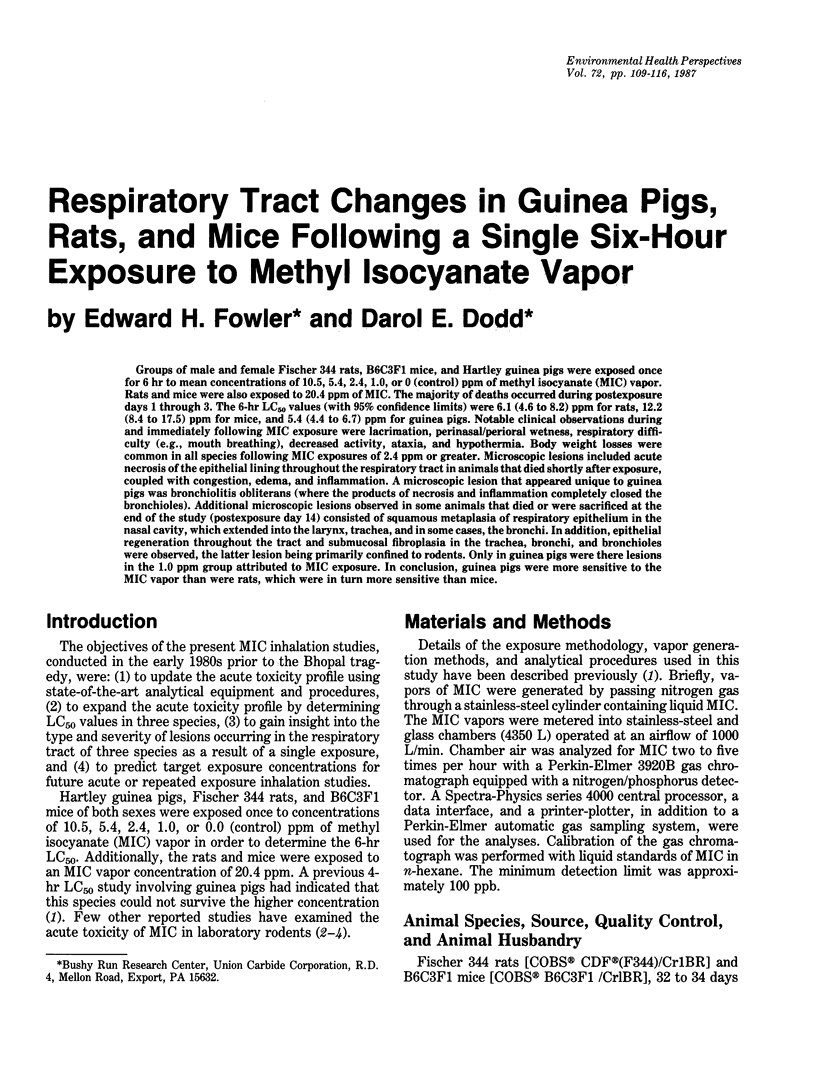
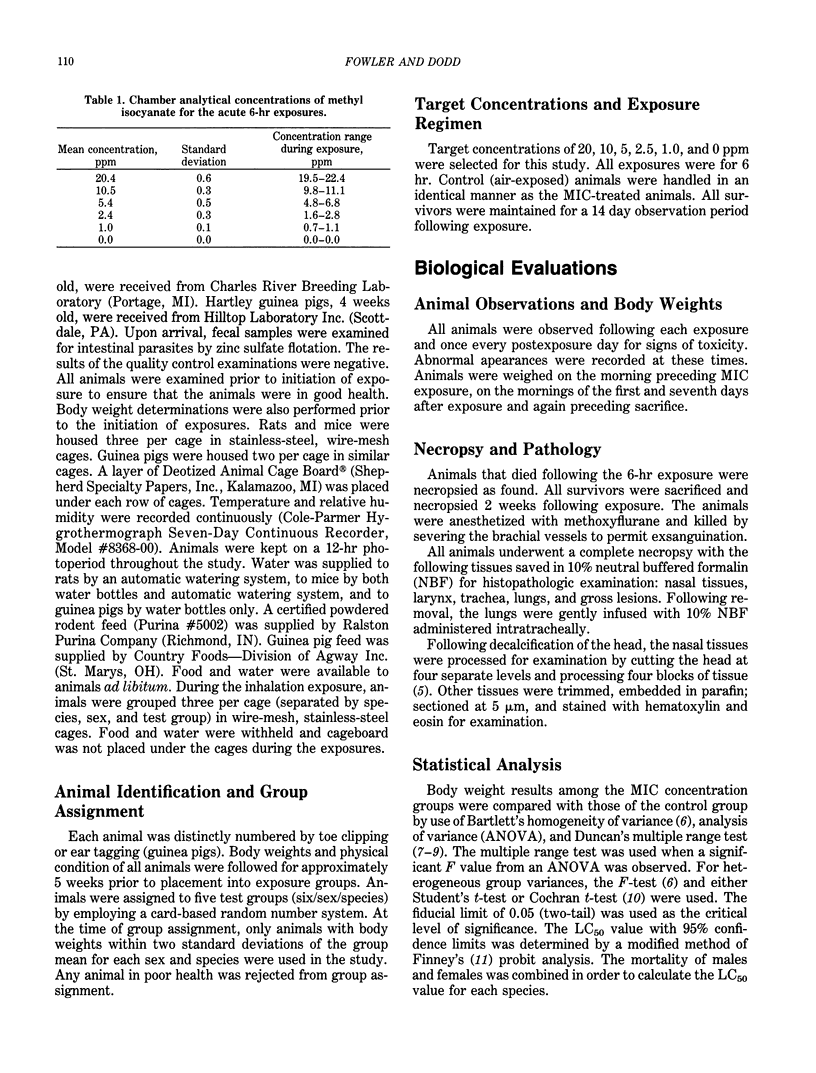
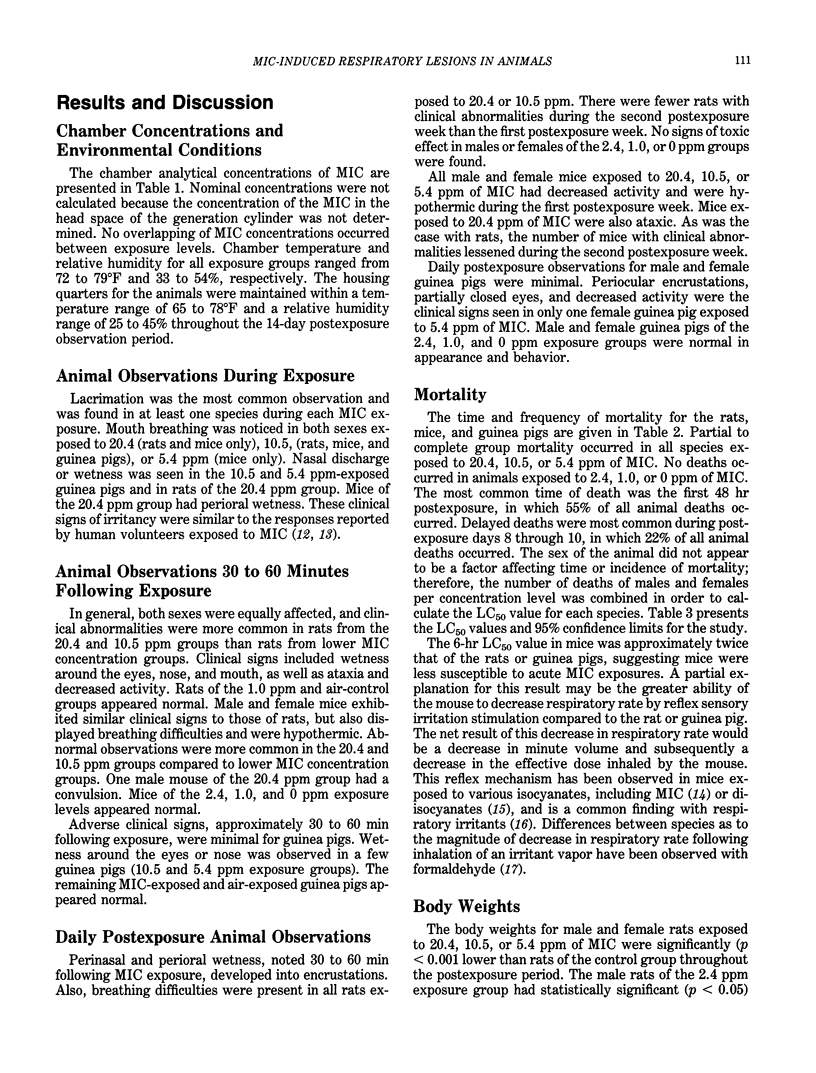
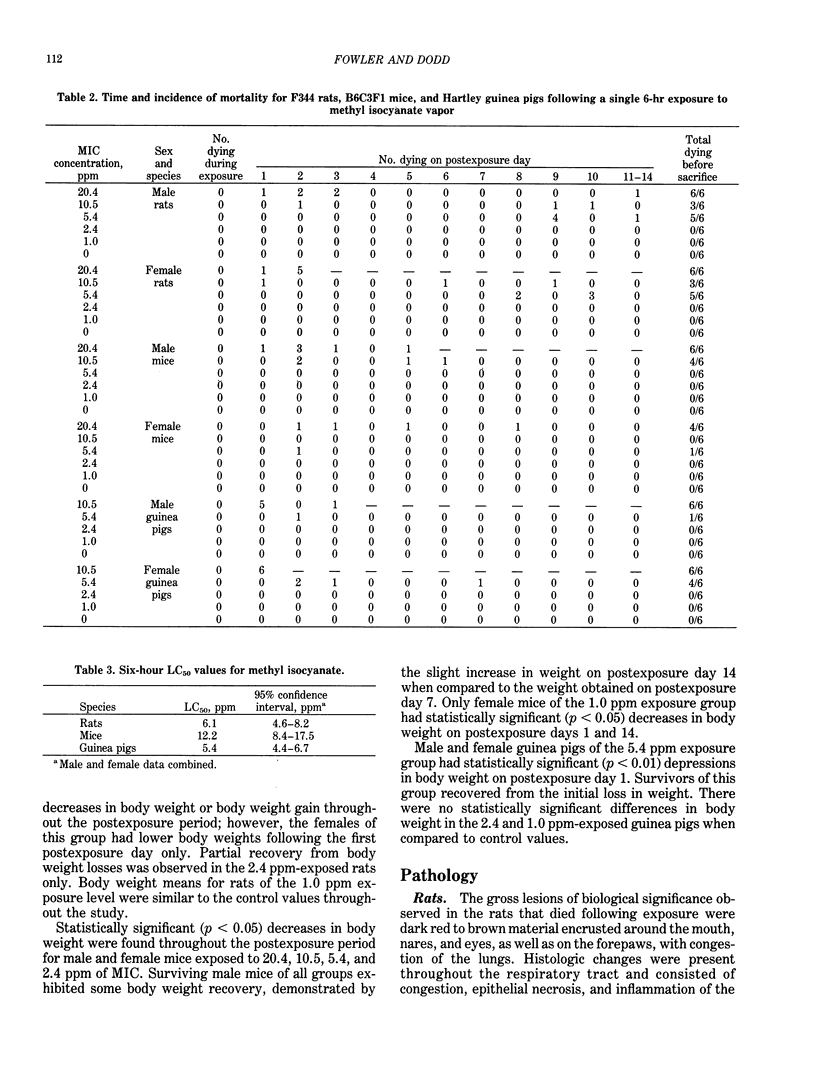
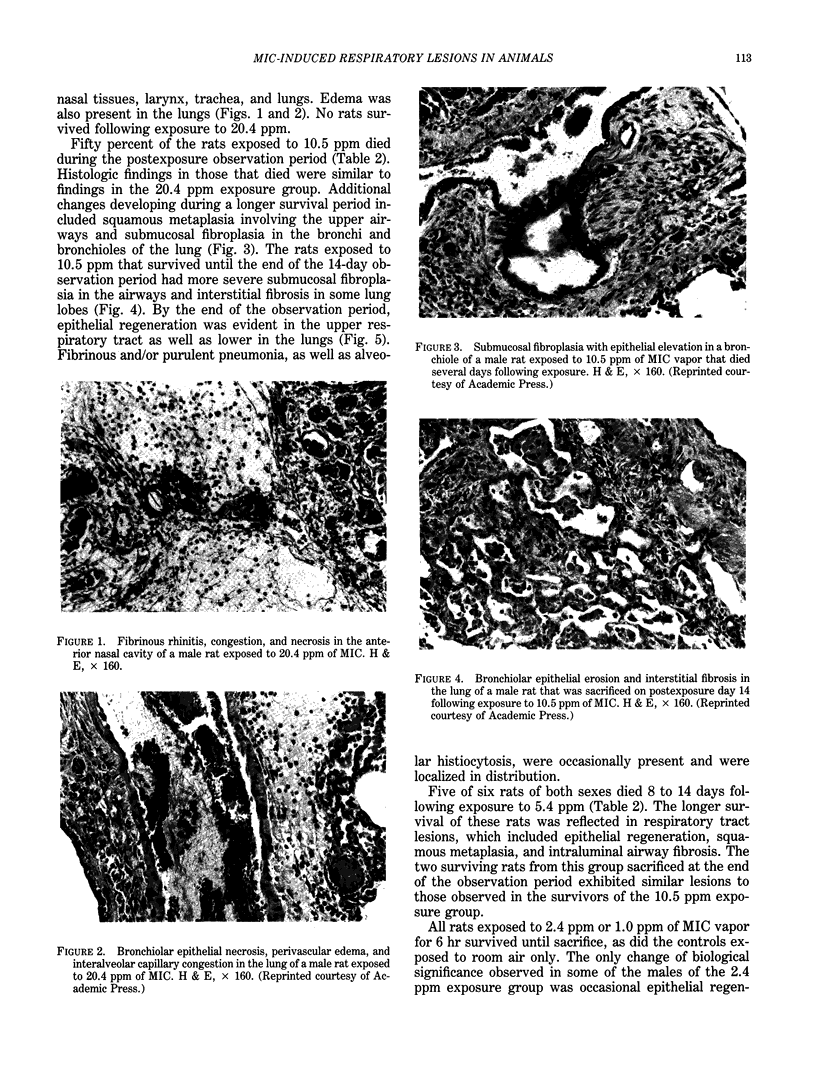
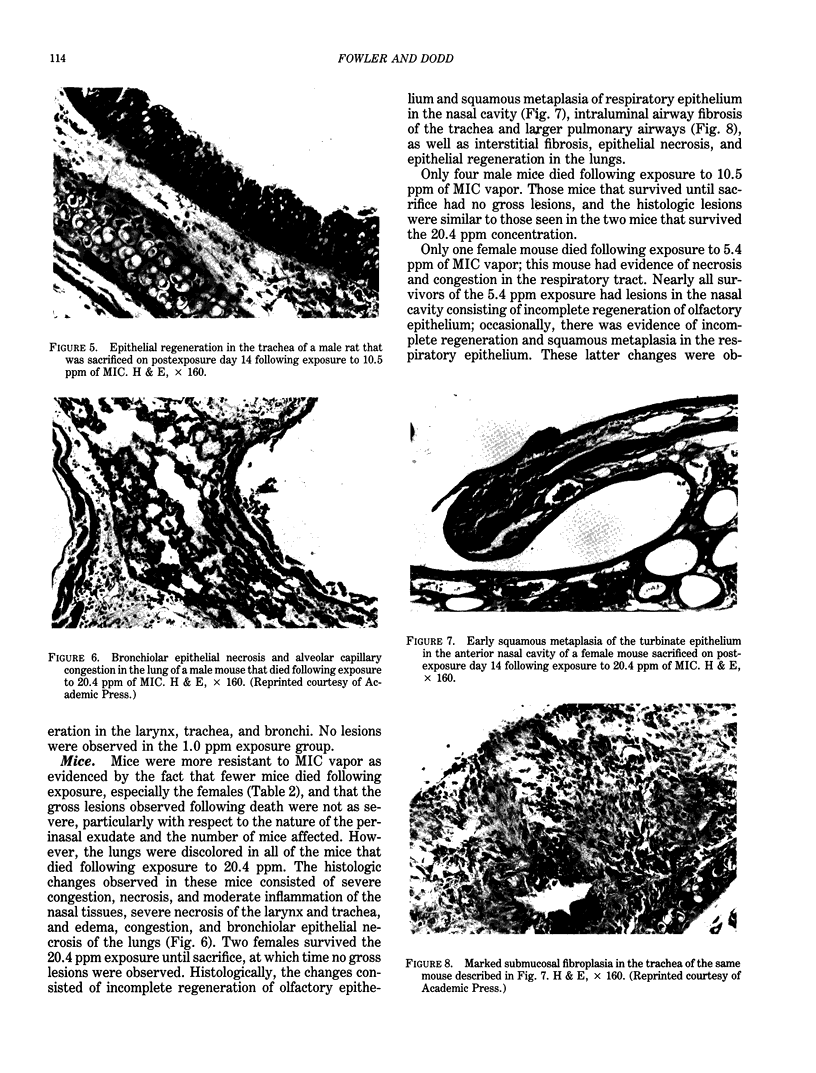
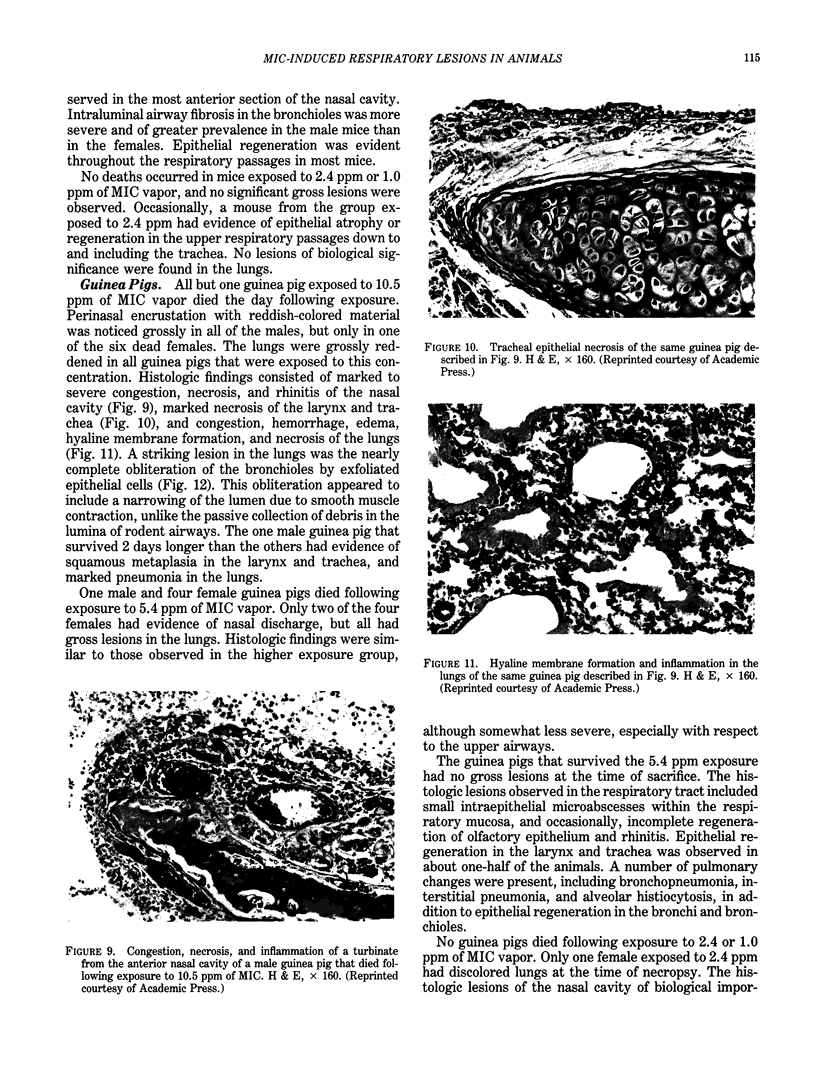
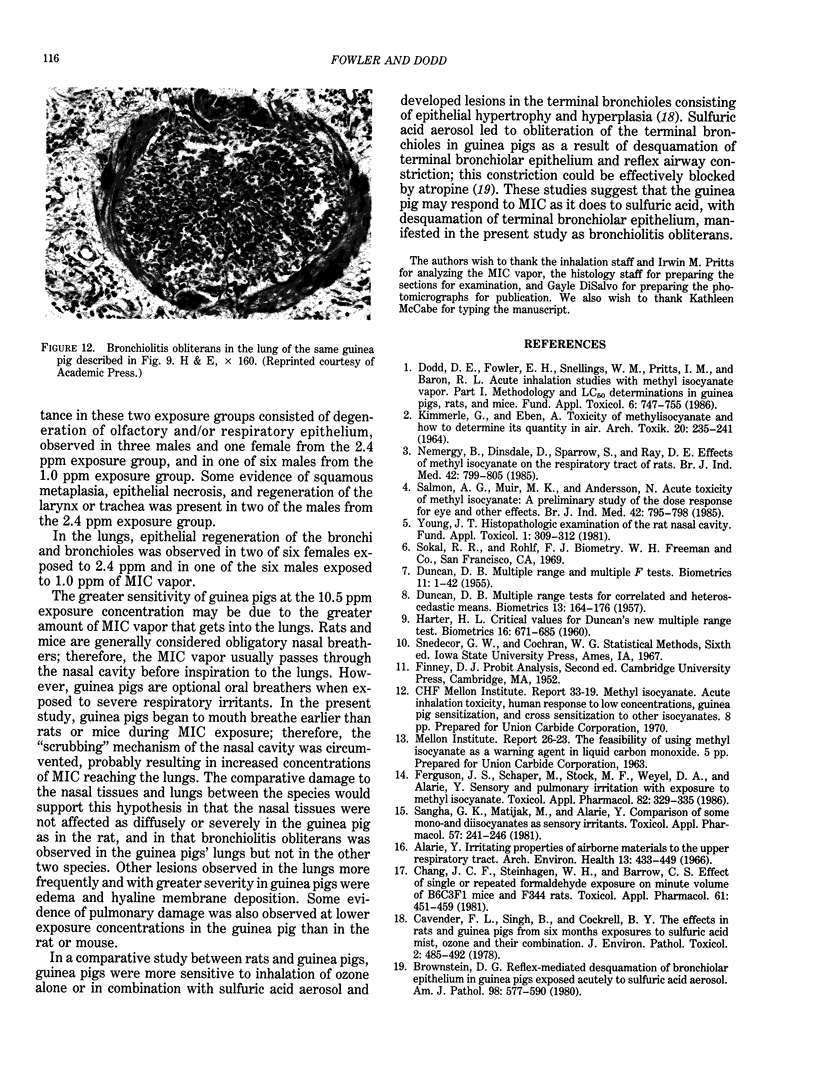
Images in this article
Selected References
These references are in PubMed. This may not be the complete list of references from this article.
- Alarie Y. Irritating properties of airborne materials to the upper respiratory tract. Arch Environ Health. 1966 Oct;13(4):433–449. doi: 10.1080/00039896.1966.10664593. [DOI] [PubMed] [Google Scholar]
- Brownstein D. G. Reflex-mediated desquamation of bronchiolar epithelium in guinea pigs exposed acutely to sulfuric acid aerosol. Am J Pathol. 1980 Mar;98(3):577–590. [PMC free article] [PubMed] [Google Scholar]
- Cavender F. L., Singh B., Cockrell B. Y. The effects in rats and guinea pigs from six months exposures to sulfuric acid mist, ozone, and their combination. J Environ Pathol Toxicol. 1978 Nov-Dec;2(2):485–492. [PubMed] [Google Scholar]
- Chang J. C., Steinhagen W. H., Barrow C. S. Effect of single or repeated formaldehyde exposure on minute volume of B6C3F1 mice and F-344 rats. Toxicol Appl Pharmacol. 1981 Dec;61(3):451–459. doi: 10.1016/0041-008x(81)90368-9. [DOI] [PubMed] [Google Scholar]
- Dodd D. E., Fowler E. H., Snellings W. M., Pritts I. M., Baron R. L. Acute inhalation studies with methyl isocyanate vapor. I. Methodology and LC50 determinations in guinea pigs, rats, and mice. Fundam Appl Toxicol. 1986 May;6(4):747–755. doi: 10.1016/0272-0590(86)90187-9. [DOI] [PubMed] [Google Scholar]
- Ferguson J. S., Schaper M., Stock M. F., Weyel D. A., Alarie Y. Sensory and pulmonary irritation with exposure to methyl isocyanate. Toxicol Appl Pharmacol. 1986 Feb;82(2):329–335. doi: 10.1016/0041-008x(86)90209-7. [DOI] [PubMed] [Google Scholar]
- KIMMERLE G., EBEN A. ZUR TOXICITAET VON METHYLISOCYANAT UND DESSEN QUANTITATIVER BESTIMMUNG IN DER LUFT. Arch Toxikol. 1964 May 27;20:235–241. [PubMed] [Google Scholar]
- Nemery B., Dinsdale D., Sparrow S., Ray D. E. Effects of methyl isocyanate on the respiratory tract of rats. Br J Ind Med. 1985 Dec;42(12):799–805. doi: 10.1136/oem.42.12.799. [DOI] [PMC free article] [PubMed] [Google Scholar]
- Salmon A. G., Kerr Muir M., Andersson N. Acute toxicity of methyl isocyanate: a preliminary study of the dose response for eye and other effects. Br J Ind Med. 1985 Dec;42(12):795–798. doi: 10.1136/oem.42.12.795. [DOI] [PMC free article] [PubMed] [Google Scholar]
- Sangha G. K., Matijak M., Alarie Y. Comparison of some mono- and diisocyanates as sensory irritants. Toxicol Appl Pharmacol. 1981 Feb;57(2):241–246. doi: 10.1016/0041-008x(81)90285-4. [DOI] [PubMed] [Google Scholar]
- Young J. T. Histopathologic examination of the rat nasal cavity. Fundam Appl Toxicol. 1981 Jul-Aug;1(4):309–312. doi: 10.1016/s0272-0590(81)80037-1. [DOI] [PubMed] [Google Scholar]














